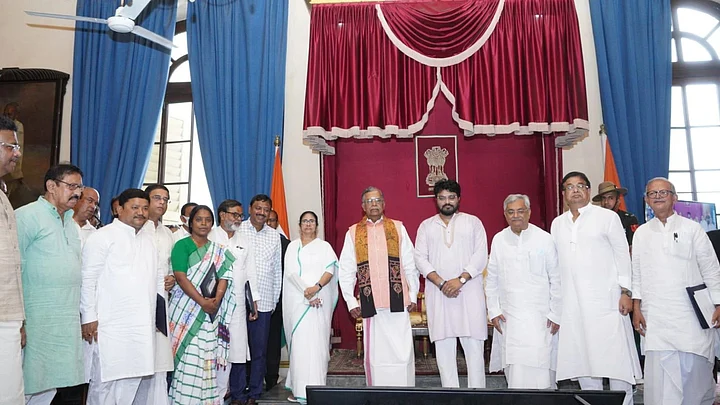West Bengal Chief Minister Mamata Banerjee rejigged her cabinet a year into forming a government for the third consecutive time. Although this wasn’t a major overhaul, it was still significantly larger compared to the previous rejigs.
This overhaul comes in the backdrop of the demise of ministers Sadhan Pande and Subrata Mukherjee, but above all, the arrest of Partha Chatterjee and his subsequent sacking from the Cabinet. Banerjee was handling Chatterjee’s portfolios and it is expected that they will be given to the eight new ministers who have been sworn in.
At least four to five existing ministers will also be relieved of their duties. According to Banerjee, “They will be required to focus on party affairs.”
The ministers have not been assigned their portfolios at the time of writing this article. It must also be noted that some existing ministers will also have their portfolios changed.
Former Union Minister Babul Supriyo, Snehashish Chakraborty, Partha Bhowmick, Udayan Guha, and Pradib Majumdar took oath as Cabinet ministers while Biplab Roy Chowdhury and Birbaha Hansda took oath as Ministers of State with independent charges. Tajmul Hossain and Satyajit Barman were sworn in as Ministers of State.
The most significant of these names will be Supriyo’s who is the only ex-Union minister in Mamata’s Cabinet now. His experience of working in the Union government can aid the Trinamool in many ways, especially as it tries to increase its national footprint.
The elevations of Supriyo is also being seen as a signal to leaders in the Bharatiya Janata Party.
The Abhishek Banerjee Imprint
Political analyst Biswanath Charkaborty tells The Quint that “with this new Cabinet, the hegemony of Abhishek Banerjee” has been established in the West Bengal government.
"The hegemony that Abhishek has in the Trinamool Congress has now made its way to the Cabinet."Biswanath Chakraborty, Political Analyst
The new Cabinet is significantly younger in comparison to the existing Cabinet, and Abhishek Banerjee has been the leader of the younger Trinamool camp.
According to Chakraborty, “This marks a shift from the old guard to the new guard.”
Leaders like Partha Bhowmick and Snehasish Chakraborty are known to be close to Abhishek Banerjee and have had a clean track record so far. Banerjee has always pushed for younger and fresh faces in the party and in the government and this Cabinet is a sign that he has been successful. Previously, Abhishek had axed several TMC leaders from the district committees because they didn’t meet expectations.
Whether it was sheer opportunism or constant hard work is still up for debate.
While leaders from the Mamata camp will continue to hold important portfolios, the Abhishek camp is slowly making its way in. But this also shows that Mamata Banerjee and Abhishek Banerjee are working in tandem, unlike previous reports of conflict between them earlier in the year. Mamata approving of Abhishek's decisions can go a long way to determine the course that the TMC will take in the future.
North Bengal Finds Representation
Another significant move achieved through this Cabinet rejig is bringing in more leaders from North Bengal. North Bengal has always been under-represented in the Cabinet and this time two leaders from the region have been inducted – Udayan Guha from Cooch Behar and Satyajit Barman from Uttar Dinajpur.
According to Chakraborty, both these inductions are quite significant because “this will help in countering (BJP's hold over) the Rajbonshi vote bank.”
Satyajit Barman is a Rajbonshi leader, and his induction can bring some of the Rajbonshi votes which otherwise go to the BJP.
Besides that, the TMC is trying to expand its presence in North Bengal. Guha is one of the tallest leaders in Cooch Behar and his induction can help the party solidify and expand their position in the region, especially in the Cooch Behar and Alipurduar area.
(At The Quint, we question everything. Play an active role in shaping our journalism by becoming a member today.)
